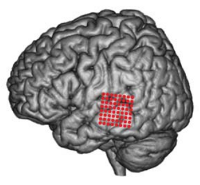The prestige of an academic journal is determined largely by its impact factor. This is a somewhat odd measure of how often, on average, a paper in a journal is cited in other academic publications. To give you a rough idea: In 2010, Nature and Science, the two most famous academic journals, had impact factors of 36 and 31, respectively. A decent journal in the field of cognitive science would have an impact factor of, say, 3. And when a journal's impact factor drops below 1, things get dodgy.
 Editors will try to boost their journals' impact factor, of course. This is good, for the most part, because it provides editors with an incentive to create a decent journal that publishes good science. But as Wilhite and Fong show in a recent edition of Science, there's a dark side as well: Coercive self-citation.
Editors will try to boost their journals' impact factor, of course. This is good, for the most part, because it provides editors with an incentive to create a decent journal that publishes good science. But as Wilhite and Fong show in a recent edition of Science, there's a dark side as well: Coercive self-citation.
Wilhite and Fong distributed a survey under academics from various disciplines. In this survey, respondents indicated whether, when submitting a manuscript to a journal, they had ever been asked by the editor to include useless citations to other papers from that same journal. The motivation for the editor to do so is obvious: Additional self-citations raise the journal's impact factor. Wilhite and Fong give a strikingly blatant example of such a request made by an editor to an author:
"You cite Leukemia [once in 42 references]. Consequently, we kindly ask you to add references of articles published in Leukemia."
Clearly, this seemingly friendly question implies something that …

![A cover of one of Elsevier's corporate sponsored [url=http://en.wikipedia.org/wiki/Australasian_Journal_of_Bone_%26_Joint_Medicine]fake scientific journals[/url].](/images/stories/blog/misc/australasian_journal.jpg) Elsevier is one of the largest academic publishers, and is notorious for charging extremely high prices. This places a considerable financial burden on publicly funded academic institutions, who are, for various reasons, practically forced to buy Elsevier content. Elsevier has also engaged in other dubious practices, such as actively supporting
Elsevier is one of the largest academic publishers, and is notorious for charging extremely high prices. This places a considerable financial burden on publicly funded academic institutions, who are, for various reasons, practically forced to buy Elsevier content. Elsevier has also engaged in other dubious practices, such as actively supporting 